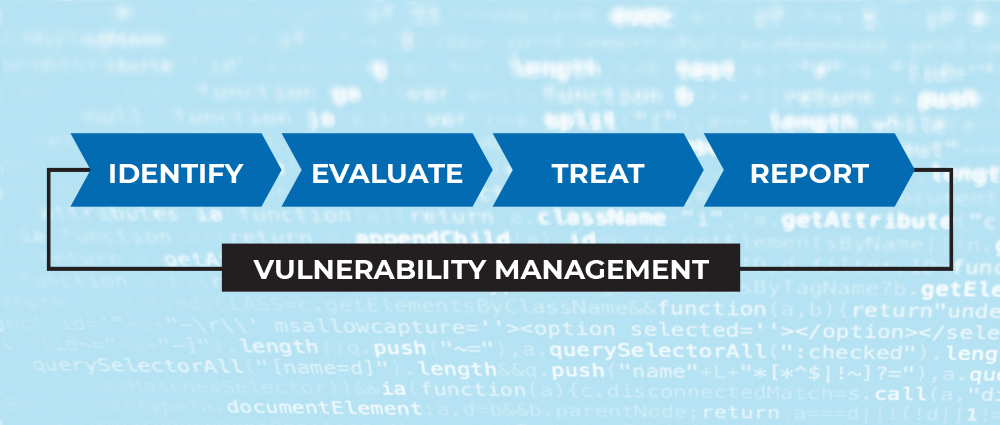Latest Blogs

By AMSAT Oct 30,2023
An Overview of Infrastructure Vulnerability Management
Vulnerability management is a systematized effort to recognize, classify, and remediate vulnerabilities in computer systems. Some of the world’s notable data breaches were triggered by identified vulnerabilities that could have easily been remediated had an organized vulnerability management system been in place.
Vulnerability management seeks to provide extensive coverage to a number of infrastructure elements, scanning them regularly to find flaws, and making it easy for teams to remediate them as they are exposed. It should be a continuous process, because new vulnerabilities are discovered all the time, and IT infrastructure is also subject to persistent change.
Why Companies Need Vulnerability Management
Cybercriminals are always on the lookout for vulnerabilities to exploit. To thwart their designs, businesses must devise a vulnerability management framework that constantly checks for flaws and enables remediation.

Application and Information Security Risk
Application and information security risk analysis and solution is the methodical application of management policies, procedures, and practices to the task of setting up the setting, recognizing, examining, assessing, treating, monitoring, and communicating information security risks.
Information security risk encompasses the effects to a business and its stakeholders that could happen owing to the pressures and flaws related to the operation and use of information systems and the environments in which those systems function.
The key means of modifying information security-related risk is through the selection, execution, maintenance, and constant supervision of preemptive, detective, and remedial security controls to defend information assets from compromise or to limit the harm to the organization if a compromise takes place.
Security Risk Assessment
Security risk assessment service and solution are sporadic exercises that test your company’s security readiness. They include checks for defects in your IT systems and business processes, as well as recommending steps to reduce the risk of future assaults.
You can carry out security evaluations internally with help from your IT team, or through a third-party inspector. Though more expensive, third-party security assessments are valuable if an internal initial assessment discloses serious security holes, or if you don’t have a devoted team of IT experts with proficiency in this area.

What are Vulnerability Management Tools?
Occasionally known as vulnerability scanning tools, vulnerability management tools can help detect flaws in IT systems. They all have some kind of classification system, recognizing vulnerabilities on a range from low to high severity, and letting organizations prioritize the most effective vulnerabilities.
An all-inclusive vulnerability management solution entails features such as vulnerability scanning; identifying vulnerabilities; prioritizing vulnerabilities; remediation recommendations; vulnerability patching, and vulnerability shielding.

IT and Database Security Service
IT and database security is a specific area within the broader domain of information security, which deals with the use of an extensive range of information security controls in order to safeguard the database systems that include the data, the database applications, the database servers, and the related network links against compromises of their privacy and integrity.
Several organizations realize the significance of information security, most of which do not have sufficient measures in place concerning database security, exposing them to various types of risks.
Our Database Vulnerability Assessment Process
In addition to sporadic security reviews, it is important to evaluate database security during database upgrades and migration to new platforms.
AMSAT’s database vulnerability assessment process includes chronological steps starting with primary interviews to examine security requirements. It further comprises database artefact collection for thorough assessment, reporting vital assessment results and discussing ways to reinforce security.
Preliminary interviews are carried out to comprehend current issues, the existing setup and settings, security policies, operational approaches, and future updates.
After the interviews are finalized, database items, including network structure and settings, operating system settings, log configuration, database accounts, and database settings are collected for a thorough evaluation.
The preliminary valuation report comprises primary database assessment metrics, existing issues and proposed improvements. These will help address the results of the assessment given data characteristics, system traits, and current issues.

About AMSAT
AMSAT’s state-of-the-art infrastructure and a wide range of services help organizations defend against looming threats, which can be tailored to specific needs of our clients. The AMSAT team comprises top security experts in a broad suite of services including Endpoint Security, Data Flow Analysis and Anomaly Detection, Intrusion Detection and Prevention, Application and Network Firewalls, Wireless Security, Cloud Security, Penetration Testing, and SWAT/Tiger and Forensic Teams.
TAGS
- Vulnerability Management
- Security Updates
Recent Blogs
Ready to Get Started?
Our specialists are ready to tailor our security service solutions to fit the needs of your organization.









